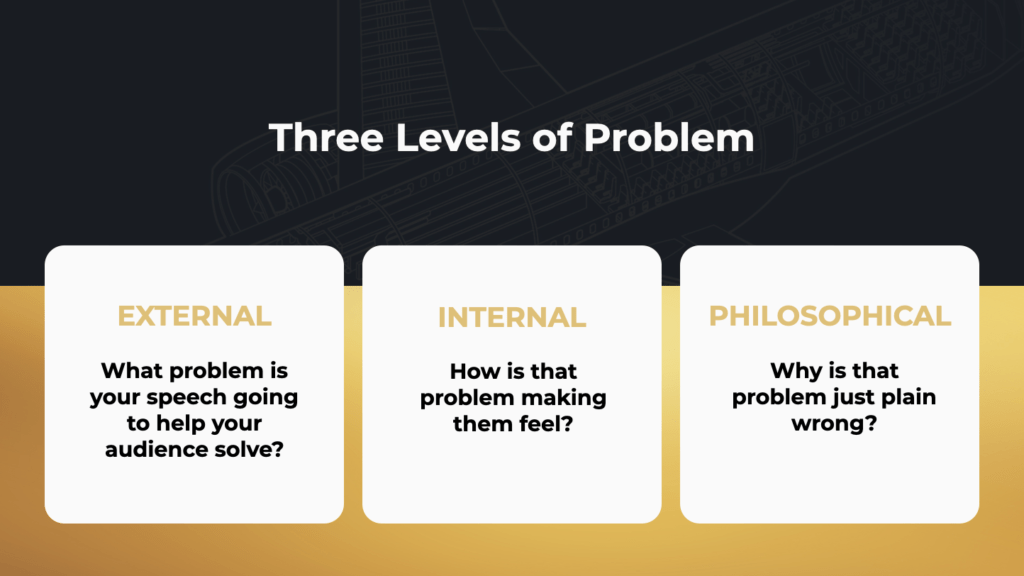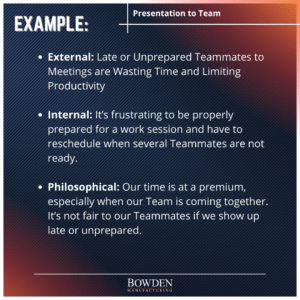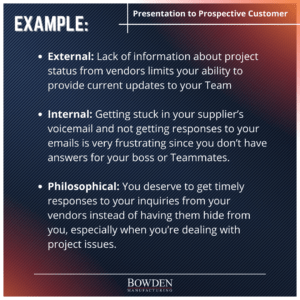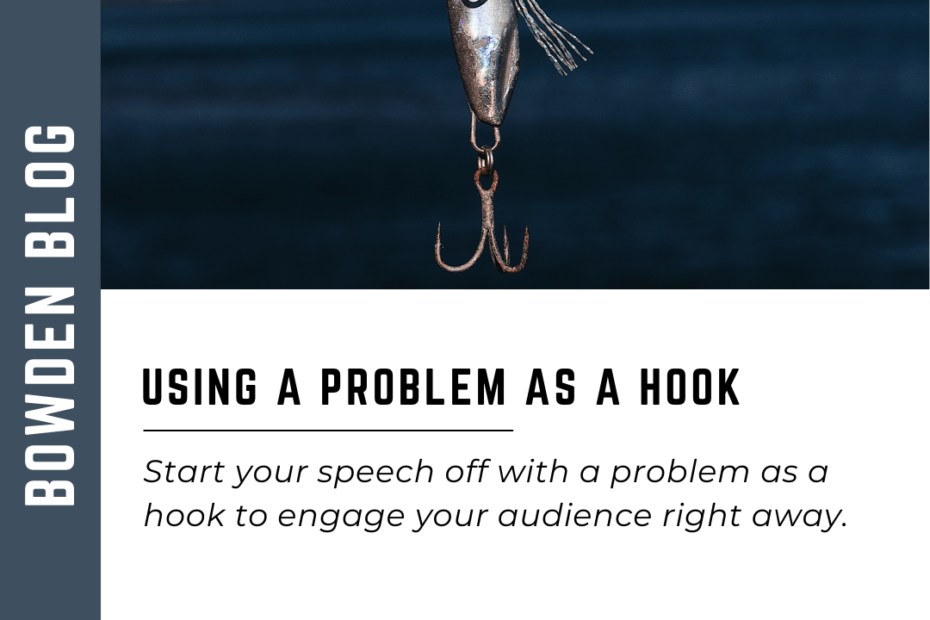Communications in Manufacturing – Why You Need to Start Your Presentation with a Problem
You’re nervous.
It’s a big presentation.
You know if you can nail the opening, you’ll settle down and it will be fine.
You’re excited to engage with this audience, but where to begin?
Should you tell a joke?
What if it’s not funny and you get started off the wrong foot?
The above paragraph is two things:
- It’s a real situation that presenters face.
- It’s an example of how to start your communications… with a Problem!
In this blog series on Communications in Manufacturing, we’ve provided several tools to help make your presentation go smoothly, your audience stay engaged with you, and how you can have them retain some of what you’re sharing.
This week, we’re talking about your opening and how to quickly get your audience hooked so that they’ll stay engaged with you throughout your presentation.
Too often, presenters begin by introducing themselves, perhaps giving their bio, and trying to impress the audience in the hopes that it will provide a reason to engage. It’s very common. As an audience, we typically give them a pass because it’s standard practice. Mostly, we’re hoping that they’ll hurry up and get to the point.
There is a better way to start your presentation to engage your audience.
The Importance of Using a Problem in Communication
As humans, your audience has genetic encoding that gives them one overriding mindset that is as unconscious as it is primal. Their brains are wired to maximize their own survival. They are constantly scanning their surroundings for danger. Quickly attuning to anything in their environment that could help them survive, they will tune out anything they don’t perceive factors into that equation for them.
When hearing the beginning of a presentation, the audience starts listening out of habit and routine. If you have a poor opening, however, they are likely to quickly let your words fade into background noise as their brains begin to monitor for other survival factors:
- Is anyone watching me?
- How long will this take before I can get to the bathroom?
- I’m a little hungry.
- It’s cool in this room.
- This seat is uncomfortable.
You will now be fighting to get them re-engaged in your presentation since their mind has started wandering.
However, if you start your presentation with a Problem, the survival instincts of the audience are immediately engaged. At a primal level, they can’t help themselves. A Problem that involves them will unconsciously kick their survival instincts and they’ll be locked in to see how it gets resolved.
The Problem is the hook that will keep them engaged, so you’ll want to come back to it throughout your presentation. By agitating it, you’ll be activating and re-activating their survival instincts along the way before you ultimately Call them to Action to solve the Problem once and for all.
The Structure of a Problem – Three Levels

When bringing a Problem into your presentation, it’s important that you consider it in a deeper fashion than the obvious issue that’s being dealt with at the time. There are three levels to a Problem and identifying the three levels of your Problem for your audience will help them engage more deeply with you.
External Problem – This is the main Problem that your audience is experiencing and that presentation is helping them solve.
Internal Problem – This is how the Problem is making the audience feel. Identifying the emotions being experienced by the audience helps them engage in a more meaningful way.
Philosophical Problem – This is why the Problem they are experiencing is just plain wrong. By touching on the underlying fundamental truth that is being violated by the Problem they are dealing with, you’ll touch their deeper and innate sense of right & wrong. Taking action to overcome the Problem can then go beyond the surface issue and become an opportunity to see that justice prevails.


Take Your Presentation to the Next Level by Using a Problem as the Hook
Starting with a Problem as the hook and digging deeper into the Internal and Philosophical aspects of the Problem will set that hook even deeper. As you work your way through your presentation, you’ll agitate the Problem to keep the audience engaged leading up to how you’ll Call them to Action to solve it.
Next week, we’ll discuss how to apply The Rule of 3 in your presentations so that you keep the points of your presentation digestible for your audience.
Get Connected
Bowden Manufacturing’s highly trained team of manufacturing experts is proud to offer the highest quality industry parts and friendly, reliable service at a competitive price.
Learn more about custom part manufacturing and get your FREE quote!
